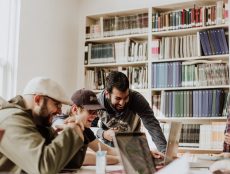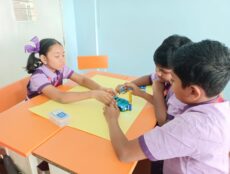
Recent studies indicated that in the United States, mobile devices have already closed what was once notable digital divide. While some of the nation’s least well off families never did own a home computer or gain access to high-speed Internet, they are now online via mobile devices. The same trend holds true around the world. In many developing nations, desk top computers, laptops and high-speed home Internet never arrived. Instead, these nations essentially went from an era of radio, television and land line telephone to mobile technology. For this reason, mobile learning, or mLearning, is generally considered to be far more accessible than traditional electronic learning, or eLearning, which relies on access to a desktop or laptop computer and high-speed Internet connection. This no doubt also accounts for the rise of mobile learning around the world.
In their 2012 report, Turning on Mobile Learning in Africa and the Middle East, UNESCO emphasized, “Mobile learning enables an improvement in the quality of education by opening up new avenues for informal, personalized and situated learning. In addition, mobile learning can potentially promote social equity by allowing marginalized groups access to decision making. This evolving value proposition offers an opportunity to leverage the ubiquity of mobile phones in addressing the systemic crisis in education in the region.” Since 2012, the efforts of UNESCO and the private sector have continued to drive mobile learning on a global level.
Mobile Learning Around the World by the Numbers
In 2011, UNESCO published a comprehensive report on mobile learning around the world. How popular was mobile communication? In Africa, people were already spending over 15% of their disposable income on mobile technologies in 2011. The report also found that while developing countries continue to lack access on myriad fronts (e.g., they lack access to textbooks), they are often have very good mobile access. A 2015 Pew Research Center study similarly found, “Since 2002, cell phone ownership has exploded…In 2002, only 8% of Ghanaians said they owned a mobile phone, while that figure stands at 83% today, a more than tenfold increase. Similar growth in mobile penetration is seen in all African countries where survey data are available.” However, it is worth noting that by comparison, as of December 2014, 89% of American adults owned a cell phone. Thus, while there is still a gap, the gap is quickly closing and notably, the gap between mobile phone ownership in Africa versus North America also remains much smaller than the gap reported in terms of home computers and and access to high-speed Internet connections.
Mobile Learning Around the World Reduces Inequities
In many developing nations, mobile technologies are more accessible than landlines. In 2012, Haiti’s approximately 10 million residents owned an estimated 6 million mobile phones. By contrast, only a fraction of Haiti’s population (50,000) had access to a mainline telephone. Thus, to scale eLearning beyond the United States, mobile technologies are key. But even though courses can be easily adapted, any instructional designer will tell you that there are some considerations that must be taken into account, including the need to create somewhat more compact learning modules that can be completed in ten minutes or less.
mLearning and the Refugee Crisis
More research, including long-term studies, are needed to ensure that eLearning and specifically, mLearning takes hold in an equitable manner worldwide, but there are some promising findings. Affordable, engaging and adaptable, mLearning is not only a way to bring education to remote and under serviced learners but to instructors and designers too.
Perhaps, one of the most critical uses of mLearning in recent years has been its adoption in refugee camps. There are now more children and youth living in refugee camps than ever before. To respond to the crisis, Télécom sans Frontières (an organization of telecommunication professions modeled after Doctors without Borders) has started to bring digital mLearning to Syrian refugee children. In 2015, over 1300 children living in camp in Turkey benefited from the program. While the goal is to ensure the children continue their education while waiting to move to a new country or to return to Syria, studies have already show that the initiative is also important on other levels. Remaining engaged in their education has also been found to have profoundly positive social and psychological stabilization impacts on the children and youth. The bottom line is that mobile learning around the world is not only important to achieving baseline education and economic goals but also broader social goals as well. With an estimated 86% of Syrian refugee children already having access to a smartphone or tablet, there is hope that mLearning may be a viable way to ensure that a generation of children on the move do not have their education disrupted for long periods









No Comments